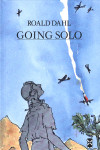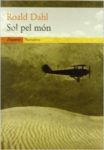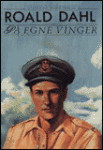Sections: Information | Plot Description
Information
- First published:
- March 1944 issue of the Ladies Home Journal
- Connections:
- The setting is the RAF’s Greek campaign in World War II, which Dahl took part in and describes in Going Solo
- Related books:
- Magazine publications:
- Audio Books:
- “Katina” read by Cillian Murphy
Plot Description
This is a story about the “last days of RAF fighters during the first Greek campaign” of World War II. Dahl himself fought in these battles and it’s not hard to imagine that a lot of it is autobiographical.
Spoiler warning! The story opens in Paramythia, Greece in early April, 1941. Three off-duty RAF pilots go to the village to help in the aftermath of a German bombing. There they find a little Greek girl sitting silently and bleeding from a cut on her forehead. They take her back to their landing field to have the company doctor help her. Once she’s better, they find out that her name is Katina and that her family were killed in the village. During a German raid on the aerodrome, the men hide in the trenches while Katina stands in the field yelling at the enemy bombers. That night they officially add her name to the list of squadron members. She travels with them as the squadron keeps moving, each time losing more planes as the situation becomes more desperate. Eventually they end up in a village called Megara, forced to use a homemade landing strip and hide their planes in the forests. The pilots are ordered to take off to protect an important shipping move, but the Germans are ready. Before the first plane can even leave the ground it is shot down. Everyone runs to hide in the trenches as the Messerschmitts buzz past and destroy the parked aircraft. The narrator peeps out and sees Katina running into the middle of the field, shaking her fists at the Germans. A Messerschmitt shoots her and she falls to the ground. The men all run to her but it is too late; she’s dead. The narrator stands and stares at the flaming planes around him. “…I saw beyond it not a tangled mass of smoking wreckage, but the flames of a hotter and intenser fire which now burned and smouldered in the hearts of the people of Greece.”













































